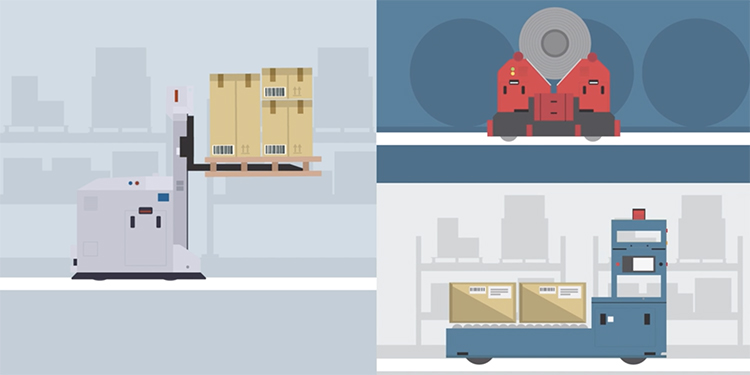
Due to the shortage of available labor and significant increases in the minimum wage, recent research from A.T. Kearney noted a jump in the overall employment costs index by 3.5% in 2018 for transportation and warehousing workers. Compounding this are consumer demands for higher service levels that require increased throughput and performance.
Considering that labor and staffing can account for up to 60% of a facility’s operations costs, it’s no wonder that more companies are looking at automated solutions to help address these challenges. Yet autonomous guided vehicle (AGV) systems are often dismissed as a potential automation solution due to misconceptions by operators that the technology is not a good fit for their facility.
In fact, AGVs — computer-controlled, wheel-based load carriers that travel throughout a facility to retrieve, transport and deliver loads from one point to another — are a flexible solution that supplements the human workforce and enables reassignment of associates to more challenging, value-added and productive tasks. Here, we dispel four common misconceptions about AGVs.
Misconception # 1: An AGV installation requires an expensive and invasive infrastructure. In reality, the majority of AGVs utilize simple, flexible navigation systems, such as laser triangulation that detects reflective targets, or natural feature identification that recognizes unique features within the facility. Additionally, they easily travel anywhere a forklift can go, as well as through narrow aisles, but at predictable, steady speeds with precisely controlled acceleration and deceleration. Equipped with safety sensors that detect obstacles and prevent collisions with building structures and personnel, AGVs are safe to deploy around workers in virtually any area. Communication to the AGVs typically leverages existing wireless networks.
Misconception # 2: AGVs won’t integrate with existing software. Computer-controlled and programmable, AGVs’ operation is directed by software that integrates seamlessly with any facility host system, warehouse management system (WMS), warehouse execution system (WES) or enterprise resource planning (ERP) system. AGV solutions providers are well versed in ensuring their technology interfaces with existing operational systems in order to facilitate high levels of productivity.
Misconception # 3: Automation implementation is an all or nothing proposition. The majority of AGV fleet installations typically begin with the introduction of just one or two vehicles as part of a pilot test to determine if the solution is the right approach for load movement. As a flexible, scalable technology, AGVs can be installed in phases to accommodate business growth. They can also be reprogrammed to take on different tasks or travel to different areas as needed.
Misconception # 4: AGVs won’t work in a specific application. Just as no two applications are the same, neither are the AGVs deployed within them. While most people picture AGVs as fork-based vehicles, in reality they come in a variety of configurations to meet unique handling needs, loads and navigation styles. In addition to fork-based vehicles, AGV types include unit-load vehicles that carry items on top; tow/tuggers that pull wheeled loads on carts in a “train” formation; and completely customized vehicles. The newest AGVs are autonomous mobile robots (AMRs). These robots tend to be more compact and carry lighter payloads than AGVs. AMRs follow internal facility maps to navigate around obstacles to their target via the shortest and most efficient path possible — based on current warehouse traffic conditions. Either solution (or a combination of both) might be the right one for an operation.
Have more questions about AGVs and their suitability for your operation? The members of MHI’s Mobile Automation Group (MAG) are always available to share information about potential solutions. They recently released a new video that further dispels common misconceptions about the technology, here.



